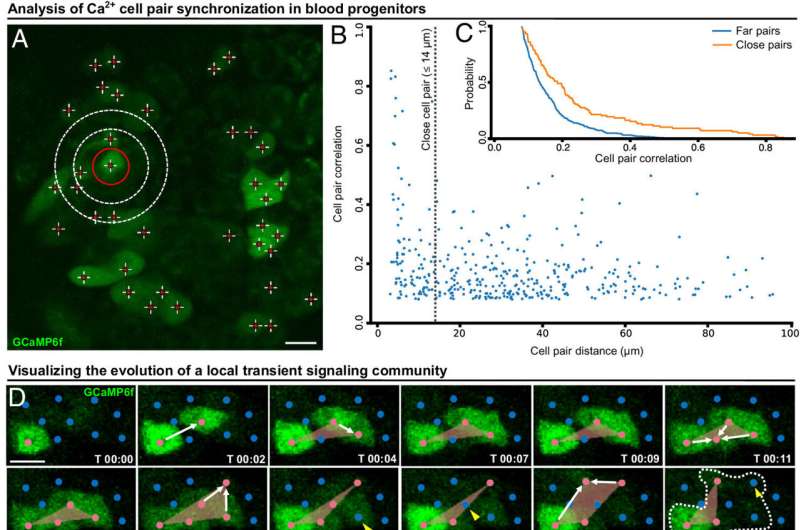This article has been reviewed according to Science X's editorial process and policies. Editors have highlighted the following attributes while ensuring the content's credibility:
fact-checked
peer-reviewed publication
trusted source
proofread
How do cells coordinate their behavior with other cells to create tissue-scale behaviors?

Cells communicate with one another during development, but what are the steps that enable them to transition from local cell-cell communication to a globally synchronized tissue-scale behavior?
Ben-Gurion University of the Negev's Prof. Assaf Zaritsky and his international colleagues have identified a new mode of communication that involves recurring "communities" of cells that are associated with the fruit fly (Drosophila) lymph gland developmental process. These findings may begin to explain how collective tissue behavior emerges from single cell interactions.
Their findings were published in the Proceedings of the National Academy of Sciences.
The team found communities of three to ten cells each which both communicated extensively among themselves and received and transmitted information to the surrounding cells. Cells that participated in multiple communities merged to form larger communication hubs, called "hotspots" that repeatedly spread and retrieve information throughout the lymph gland to synchronize the tissue.
These "hotspots" resemble beating pacemaker heart cells that coordinate other individual cells to guide collective decisions in the heart. These communities and "hotspots" emerged in advanced stages of lymph gland development, and required the existence of tiny channels, called "gap junctions," that connect adjacent cells and allow them to communicate with each other by direct passing of molecules and ions between them.
"We pinpointed an intermediate spatial scale between single-cell and tissue function involving cell communities working together to coordinate the collective. These results highlight how diversity in local cell-cell communication can contribute to collective decision making," explains Prof. Zaritsky.
Prof. Zaritsky is a member of the Department of Software and Information Systems Engineering.
Additional researchers included: Saar Ben David from the same department at Ben-Gurion University and Kevin Ho and Guy Tanentzapf from the Department of Cellular and Physiological Sciences at the University of British Columbia.
More information: Saar Ben David et al, Formation of recurring transient Ca 2+ -based intercellular communities during Drosophila hematopoiesis, Proceedings of the National Academy of Sciences (2024). DOI: 10.1073/pnas.2318155121
Journal information: Proceedings of the National Academy of Sciences
Provided by Ben-Gurion University of the Negev





















